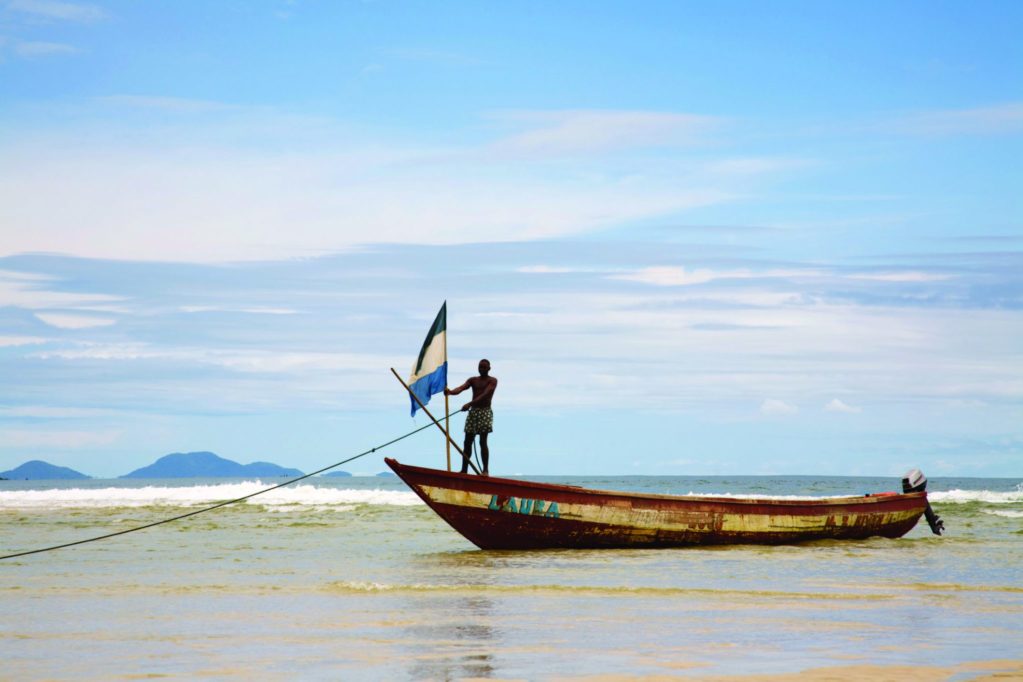For a better part of the 1990s and the early 2000s, the mere mention of the name Sierra Leone conjured up images of amputees, brutal execution, abandoned children and fleeing refugees.
It is estimated that between 1991 and 2001—a mere 30 years after gaining independence from Britain—more than 50 000 people died in Sierra Leone and over two million were displaced in neighboring countries as refugees. Their country had fallen into the wrong hands of military juntas that had no regard whatsoever for human life, the constitution and accompanying freedoms.
So, few believed the optimism of African Union leaders, and United Nations’ Secretary-General Ban Ki-moon, who asserted that “a key benchmark for peace” would indeed be achieved on November 17, 2012, the day the six–million-people West African nation successfully took to the polls to elect a president, parliamentarians and local councilors.
Notwithstanding a few eyebrow-raising moments—among them the main opposition’s initial refusal to accept the outcome of the election—Sierra Leoneans have since shown a determination to put one of Africa’s most deadly civil wars behind them, and are now rolling up their sleeves getting ready for reconciliation, national cohesion, infrastructure reconstruction and economic development.
Some skeptics still doubt whether the mineral-rich country has put its past behind it and is now officially open for business. They will get their answer from the International Monetary Fund (IMF), who, following a staff mission to Sierra Leone towards the end of last year, found that economic growth had in fact already “strengthened in recent years, driven by expansion in agriculture, services and construction activities. Real GDP growth increased from 3.2% in 2009 to 6% in 2011. The coming on stream of iron ore production in late 2011 is expected to boost growth and exports significantly in 2012 and beyond. Inflationary pressures have trended downwards since mid-2011, aided by a sharp fall in non-food inflation, a tight monetary policy stance, and stability in the exchange rate. The external position is set to benefit from increased mining exports and reduced iron ore-related imports.”
Loading...
On a continent that is fast getting global investors drooling, but frustrating them equally by making it tough to do business, Sierra Leone is among those countries that are trying to act fast to rectify that problem.
The recently released Doing Business 2013 report, published by the World Bank and its subsidiary, the International Finance Corporation, finds Sierra Leone to have improved its “ease of doing business” record, from number 148 in 2012 to 140 this year, out of a total of 185 economies surveyed.
But that’s not to say its all hunky dory. As the World Bank observes, “in spite of its remarkable strides and reforms since the war ended in 2002, problems of poor infrastructure—including roads and energy—low capacity, youth unemployment, high maternal and infant mortality, widespread rural impoverishment, impact of the global economic downturns, and lapses in public financial management and governance still persist.
“There is also the daunting challenge of enhancing transparency in managing the country’s vast natural resources,” World Bank economists say.
Following “candid and constructive discussions” with Sierra Leonean decision makers, IMF officials write: “The medium-term prospects are favorable. However, they are subject to downside risks related to the uncertain global economic outlook and potential adverse movements in commodity prices for Sierra Leone. To support broad-based growth and reduce the economy’s vulnerability to exogenous shocks, the authorities would need to sustain efforts to improve the business environment and address impediments to growth.
“Key among these are continued investment in infrastructure to support productivity gains in the private sector, increased economic diversification, and broader access to financial services, particularly for small- and medium-sized enterprises to create employment opportunities. The mission welcomed progress in the preparation of the authorities’ new poverty reduction and growth strategy, the Agenda for Prosperity, which outlines policies and reforms to address Sierra Leone’s developmental challenges.”
Citing as an example the performance of a program the IMF is sponsoring in the country, “the mission found that all quantitative performance criteria and indicative targets were met, and that progress was being made in implementing the government’s privatization agenda. With support from the IMF and other development partners, the authorities prepared legislation outlining fiscal regimes for natural resources.”
Diamonds from Sierra Leone is a Grammy-winning song released in 2005 by American rap musicians Kanye West and Jay-Z. It should be music to anyone’s ears that legislators are hard at work, trying to ensure that the erstwhile “blood” diamonds that the musicians sang about and which were once mined and sold ostensibly by warlords to buy weapons and fuel atrocities, will now benefit the country’s six million people, a great majority of whom remain dirt poor.
Sierra Leone is also endowed with some of the world’s best bauxite, rutile, gold and iron ore, but the country is also diversifying, moving away from a heavy dependence on minerals, although the pace of that diversification is still slow.
The economy is now being led by sectors other than minerals. The country’s official figures put agriculture’s contribution at 58.5% of the GDP, services industries at 10.4%, trade and tourism at 9.5%, wholesale and retail trade 9%, mining and quarrying at 4.5%, government services at 4%, manufacturing and handicrafts at 2%, construction 1.7% and electricity and water at 0.4%.
As to which of these sectors will take the lead in the drive to ensure that Sierra Leone no longer remains one of the poorest countries in the world, the answer may lie in whether the rest of the world sees the enormity of the challenge still facing the country as a hindrance, or an investment opportunity.
Loading...
